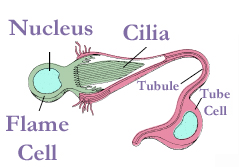|
Poliopsiidae
''Poliopsis'' is a monotypic genus of nemerteans belonging to the monotypic family Poliopsiidae. The only species is ''Poliopsis lacazei''. The species is found in France. References Heteronemertea Nemertea genera Monotypic nemertea genera {{nemertean-stub ... [...More Info...] [...Related Items...] OR: [Wikipedia] [Google] [Baidu] |
Heteronemertea
Heteronemertea is a monophyletic order of about 500 species of nemertean worm. It contains genera such as ''Lineus'' and ''Cerebratulus'', and includes the largest and most muscular nemerteans. Almost all heteronemerteans have three primary body-wall muscle strata: an outer longitudinal, a middle circular, and an inner longitudinal. The lateral nerve cords are outside the circular muscle, as in palaeonemerteans, but separated from the epidermis by the usually well-developed outer longitudinal muscle. Taxonomy Families within the order Heteronemertea include: * Baseodiscidae * Cerebratulidae * Gorgonorhynchidae *Lineidae Lineidae is a family of nemertean worms. It contains the following genera: * '' Aetheolineus'' Senz, 1993 * '' Ammolineus'' Senz, 2001 * ''Antarctolineus'' Muller & Scripcariu, 1964 * ''Apatronemertes'' Wilfert & Gibson, 1974 * '' Australineus'' ... * Mixolineidae * Panorhynchidae * Poliopsiidae * Polybrachiorhynchidae * Pussylineidae * Riseriellidae * Vale ... [...More Info...] [...Related Items...] OR: [Wikipedia] [Google] [Baidu] |
Monotypic Genus
In biology, a monotypic taxon is a taxonomic group (taxon) that contains only one immediately subordinate taxon. A monotypic species is one that does not include subspecies or smaller, infraspecific taxa. In the case of genera, the term "unispecific" or "monospecific" is sometimes preferred. In botanical nomenclature, a monotypic genus is a genus in the special case where a genus and a single species are simultaneously described. In contrast, an oligotypic taxon contains more than one but only a very few subordinate taxa. Examples Just as the term ''monotypic'' is used to describe a taxon including only one subdivision, the contained taxon can also be referred to as monotypic within the higher-level taxon, e.g. a genus monotypic within a family. Some examples of monotypic groups are: Plants * In the order Amborellales, there is only one family, Amborellaceae and there is only one genus, '' Amborella'', and in this genus there is only one species, namely ''Amborella trichopoda.' ... [...More Info...] [...Related Items...] OR: [Wikipedia] [Google] [Baidu] |
Nemertea
Nemertea is a phylum of animals also known as ribbon worms or proboscis worms, consisting of 1300 known species. Most ribbon worms are very slim, usually only a few millimeters wide, although a few have relatively short but wide bodies. Many have patterns of yellow, orange, red and green coloration. The foregut, stomach and intestine run a little below the midline of the body, the anus is at the tip of the tail, and the mouth is under the front. A little above the gut is the rhynchocoel, a cavity which mostly runs above the midline and ends a little short of the rear of the body. All species have a proboscis which lies in the rhynchocoel when inactive but everts to emerge just above the mouth to capture the animal's prey with venom. A highly extensible muscle in the back of the rhynchocoel pulls the proboscis in when an attack ends. A few species with stubby bodies filter feed and have suckers at the front and back ends, with which they attach to a host. The brain is a rin ... [...More Info...] [...Related Items...] OR: [Wikipedia] [Google] [Baidu] |
Nemertea Genera
Nemertea is a phylum of animals also known as ribbon worms or proboscis worms, consisting of 1300 known species. Most ribbon worms are very slim, usually only a few millimeters wide, although a few have relatively short but wide bodies. Many have patterns of yellow, orange, red and green coloration. The foregut, stomach and intestine run a little below the midline of the body, the anus is at the tip of the tail, and the mouth is under the front. A little above the gut is the rhynchocoel, a cavity which mostly runs above the midline and ends a little short of the rear of the body. All species have a proboscis which lies in the rhynchocoel when inactive but everts to emerge just above the mouth to capture the animal's prey with venom. A highly extensible muscle in the back of the rhynchocoel pulls the proboscis in when an attack ends. A few species with stubby bodies filter feed and have suckers at the front and back ends, with which they attach to a host. The brain is a ring ... [...More Info...] [...Related Items...] OR: [Wikipedia] [Google] [Baidu] |


